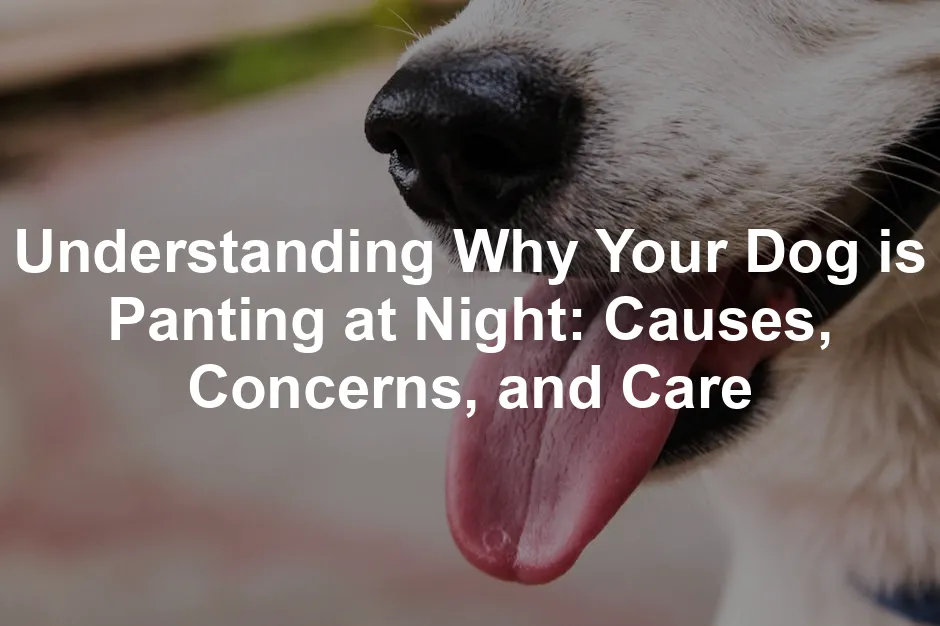Introduction
In the serene hours of the night, when the world is peacefully quiet, the sudden sound of your dog panting can be alarming. You might wonder, “Why is my dog panting at night? Is it just a case of the midnight munchies, or is something more serious going on?” While panting is a dog’s natural way to cool off, nighttime panting can sometimes indicate distress or hidden health issues.
Picture this: You’re ready to catch some Zs, but your pup is wide awake, panting like they just finished a marathon. It’s enough to make any pet parent’s heart race. Is your furry friend simply adjusting to their cozy bed, or is there something lurking beneath the surface? This article sheds light on various reasons dogs may pant at night, providing valuable insights to help you determine when it’s time to consult the vet.
Nighttime panting can be caused by several factors, from environmental stressors to underlying medical conditions. By understanding the nuances of this behavior, you can better support your four-legged companion and ensure they enjoy peaceful nights. So, let’s get to the bottom of this panting phenomenon and keep those nighttime worries at bay!

Summary
Excessive panting at night can be a source of concern for dog owners. Although panting is a normal behavior for dogs, it becomes a problem when it occurs without a clear reason. Common causes for nighttime panting include anxiety or stress due to environmental factors, such as loud noises or routine changes. Health issues like Cushing’s disease, heart or respiratory problems, pain, and cognitive disorders can also contribute to this behavior.
Understanding the signs of excessive panting and knowing when to seek veterinary care is vital for your dog’s well-being. In this guide, we will break down the mechanics of panting, explore the common causes behind excessive nighttime panting, and identify signs that indicate an urgent need for veterinary intervention. Additionally, we’ll provide practical tips for managing your dog’s health, ensuring you both get the restful nights you deserve.
If your dog struggles with anxiety, consider using a ThunderShirt Classic Dog Anxiety Jacket. This product applies gentle, constant pressure to calm your pup during stressful situations like thunderstorms or fireworks, making it a must-have for anxious dogs.
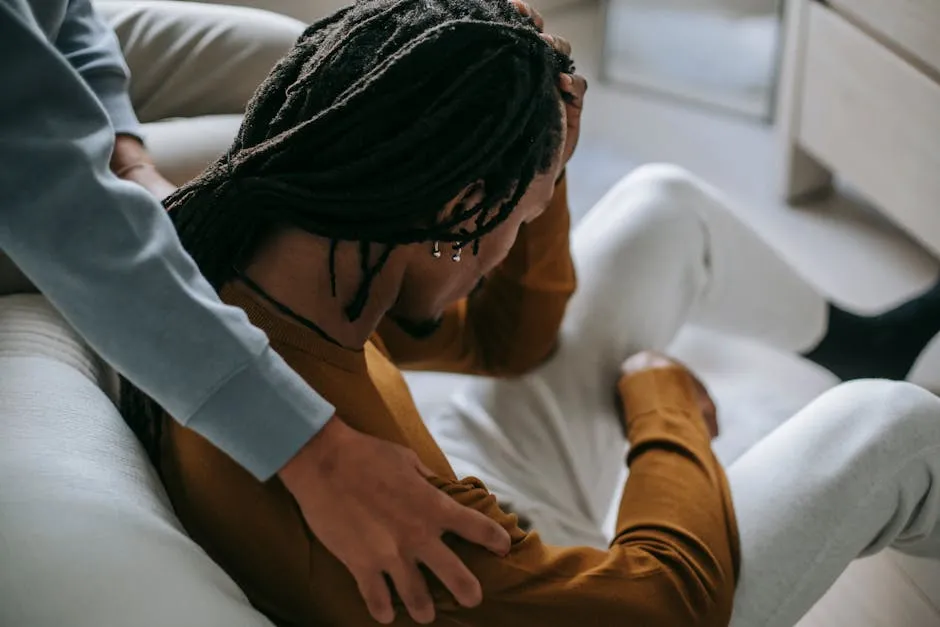
Why Do Dogs Pant?
The Science Behind Panting
Dogs pant for various reasons, primarily to cool down. Unlike humans, they lack sweat glands across their bodies. Instead, panting acts like their version of sweating. When a dog pants, they inhale cool air and exhale hot air, effectively lowering their body temperature. This process also helps evaporate moisture from their tongue and mouth, which aids in cooling.
A typical resting dog’s breathing rate falls between 15 to 35 breaths per minute. However, this rate can vary based on activity levels. After a lively game of fetch, you might notice your pup’s breathing rate zooming past the norm. That’s perfectly normal! But if your dog pants heavily while at rest, it may warrant a closer look.
To keep your pup entertained and engaged, consider investing in a KONG Classic Dog Toy. It’s not just a toy; it’s a puzzle that keeps your dog mentally stimulated, reducing anxiety and keeping those nighttime pants at bay.
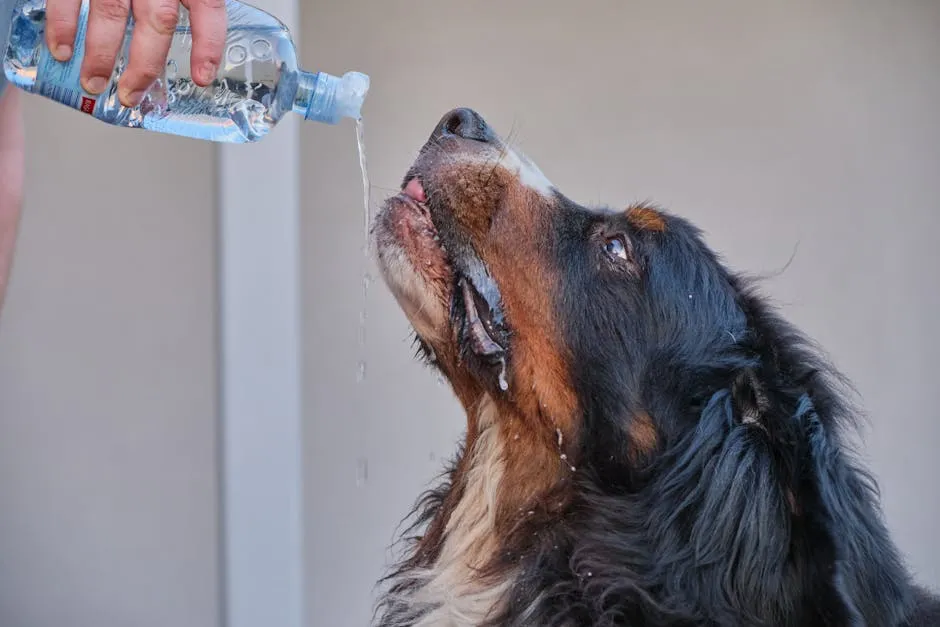
When is Panting Normal?
Panting is expected after exercise, especially in warm weather. For instance, your dog might be panting like a steam engine after a long walk or during a particularly exciting play session. In these cases, it’s just their body’s way of saying, “Hey, I need to cool off!”
However, some breeds are more prone to breathing issues. Brachycephalic breeds like pugs, bulldogs, and boxers can struggle with normal panting due to their unique facial structures. For these pups, even mild exertion can lead to excessive panting. If your flat-faced friend starts panting unusually, consider their breed’s tendencies and check in with your vet if necessary.
If you’re worried about your dog’s dental health, using Vet’s Best Dog Toothpaste can help keep their teeth clean and healthy, which is essential for overall well-being.
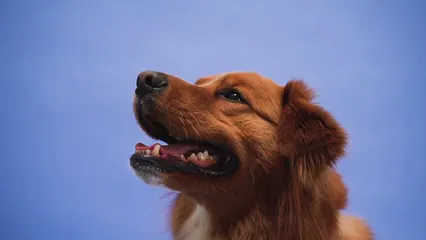
Common Causes of Nighttime Panting
Nighttime panting can be a puzzling experience for dog owners. It’s essential to identify the underlying causes to ensure your furry friend’s comfort and health. Here, we’ll examine some common health conditions, environmental factors, pain or discomfort, and issues related to aging that may contribute to excessive panting at night.
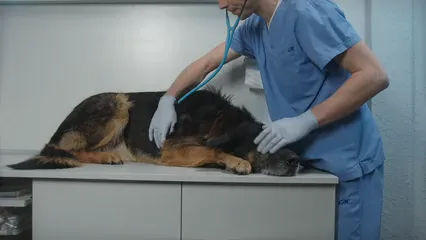
Health Conditions
Cushing’s Disease
Cushing’s Disease, or hyperadrenocorticism, is a hormonal disorder that results from an excess of cortisol in the bloodstream. This condition is particularly prevalent in older dogs. Symptoms include increased thirst, heightened hunger, frequent urination, and a pot-bellied appearance. If your dog exhibits these signs alongside nighttime panting, it’s best to consult your vet for a thorough evaluation.
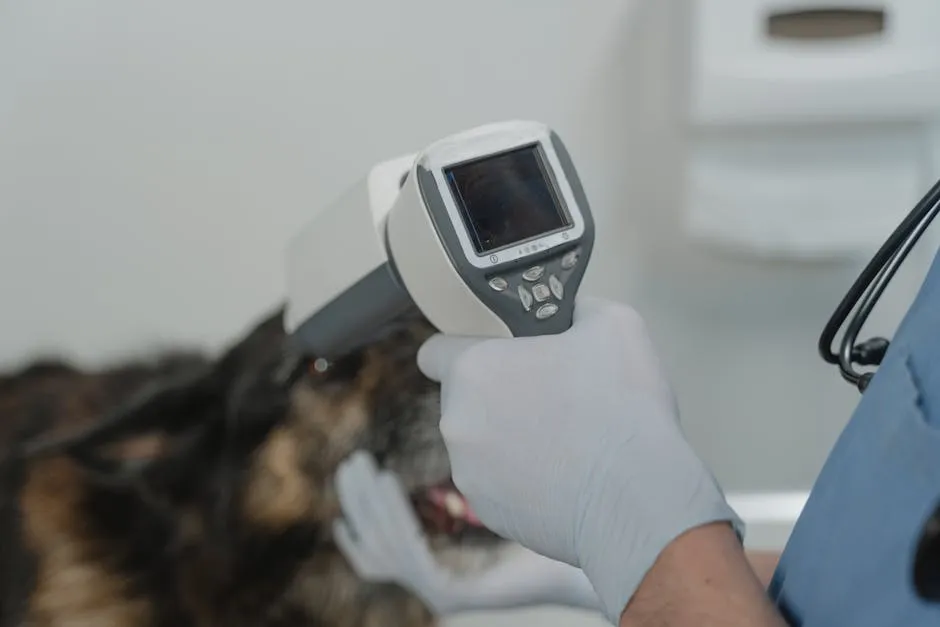
Heart Disease
Heart disease can manifest in various ways, including excessive panting. Dogs with this condition may show signs such as panting after light exertion or a persistent cough. If your dog seems to tire quickly during walks or has a noticeable change in breathing patterns, it’s crucial to seek veterinary advice. Early detection can make all the difference in managing heart-related issues effectively.
If your pup is prone to anxiety, consider the Anxious Pet Calming Spray. This spray can help ease their tension during stressful moments, which might alleviate nighttime panting.
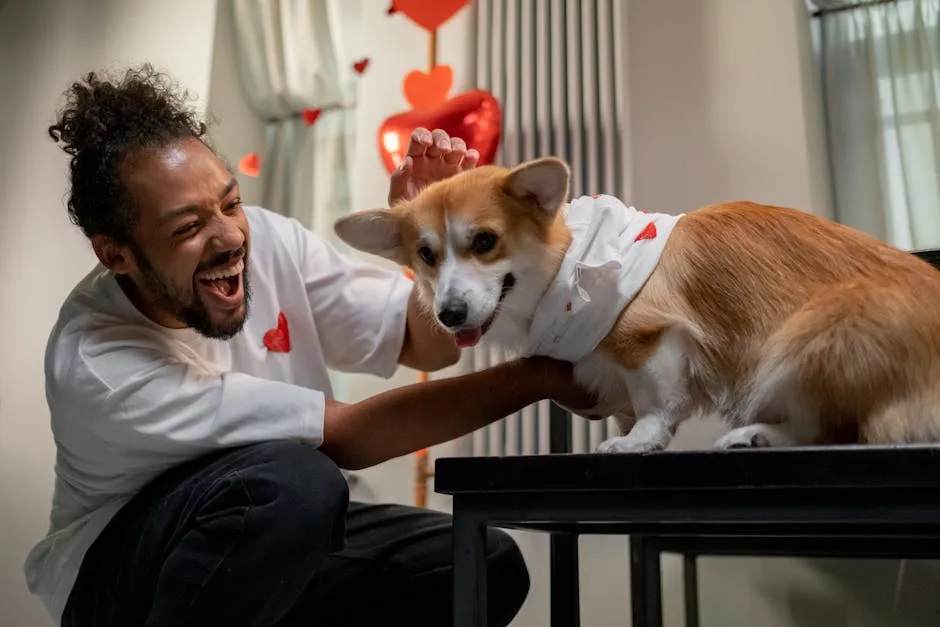
Respiratory Problems
Respiratory diseases can significantly impact your dog’s ability to breathe comfortably. Conditions such as pneumonia or bronchitis can lead to heavy panting, especially at night. Symptoms that indicate a respiratory problem include difficulties breathing, coughing, or a bluish tint to the tongue or gums. If you observe these signs, it’s important to seek immediate veterinary care.
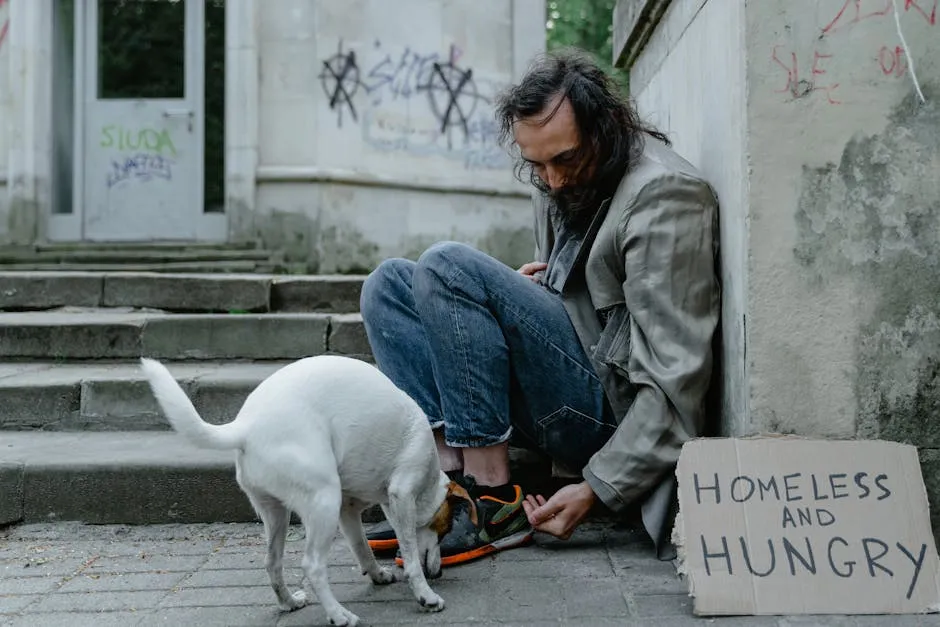
Environmental Factors
Stress or Anxiety
Stress and anxiety can be significant triggers for nighttime panting. Common culprits include loud noises, such as thunderstorms or fireworks, and changes in the dog’s routine. If your dog appears restless, paces, or shows signs of distress during these events, consider creating a calming environment. Behavioral techniques or calming aids may help alleviate their anxiety.
For those stressful nights, consider using an Adaptil Dog Calming Diffuser. This device releases calming pheromones that can help soothe your anxious pup during stressful situations.
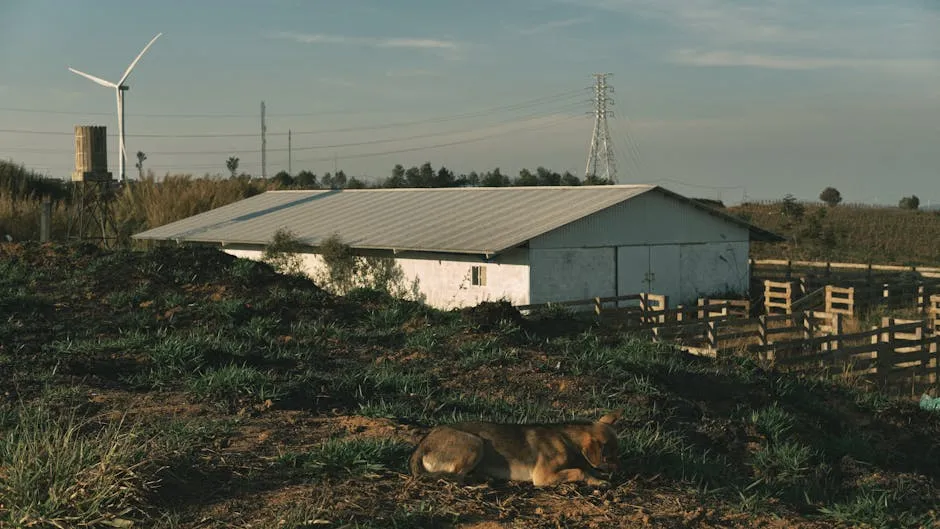
Environmental Issues
Temperature and humidity levels can impact your dog’s comfort significantly. High nighttime temperatures, especially in poorly ventilated spaces, can lead to excessive panting. Additionally, allergies or irritants in the environment can disrupt your dog’s sleep, contributing to restlessness and panting. Maintain a comfortable sleeping space and monitor your dog’s reaction to environmental changes.
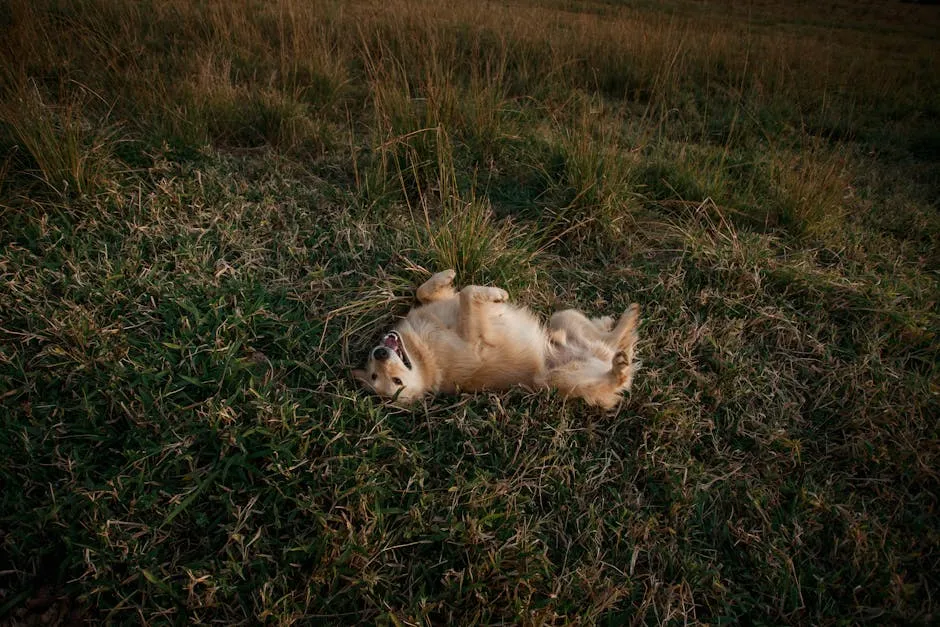
Pain and Discomfort
Pain is another potential reason for excessive panting at night. Conditions like arthritis, injuries, or other sources of discomfort can lead to restless behavior in dogs. Watch for behavioral clues indicating pain, such as difficulty getting up, reluctance to move, or sensitivity to touch. If you suspect your dog is in pain, consulting with your veterinarian is essential to identify the cause and explore treatment options.
To help ease any discomfort, consider a Furhaven Orthopedic Dog Bed. It provides excellent support for their joints, ensuring they get the restful sleep they deserve.

Aging and Cognitive Disorders
As dogs age, they may experience various health issues that affect their behavior and comfort. Canine cognitive dysfunction, akin to dementia in humans, can lead to changes in sleep patterns. Symptoms often include confusion, disorientation, and excessive panting at night. If your senior dog displays these signs, it’s important to discuss them with your vet. They can provide strategies to improve your dog’s quality of life and help manage cognitive decline.
For aging dogs, a PetFusion Ultimate Dog Bed can be a great investment. It’s designed for maximum comfort and support, making it perfect for older dogs who need a little extra care.
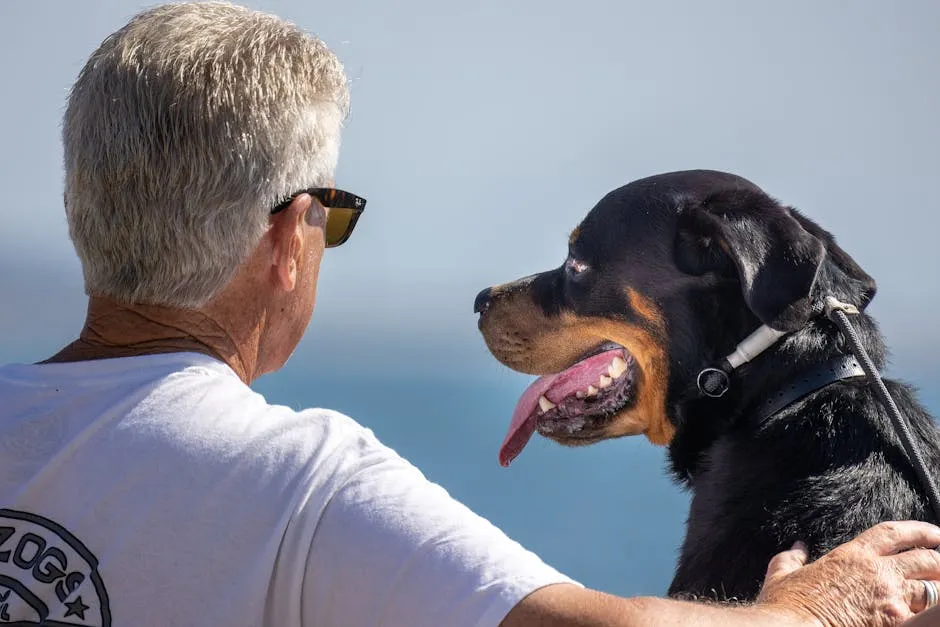
In summary, nighttime panting can result from various health conditions, environmental factors, pain, or the effects of aging. By understanding these common causes, you can take proactive steps to ensure your dog’s well-being. If excessive panting persists, don’t hesitate to consult your veterinarian for a comprehensive evaluation. After all, a well-rested dog is a happy dog!
If your dog is panting at night, it’s essential to understand the potential causes behind this behavior. For more information, check out this article on dog panting at night.
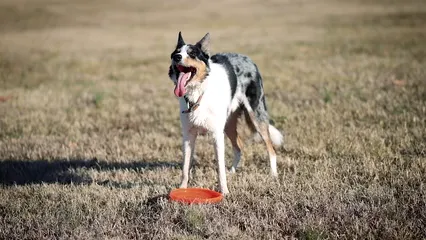
When to Consult a Veterinarian
Recognizing Urgent Signs
If you notice your dog panting excessively at night, pay close attention. Certain symptoms may signal an urgent need for veterinary care. A bluish tongue or gums should send you racing to the vet. This discoloration indicates a lack of oxygen, a serious issue that could point to respiratory distress or heart problems.
Excessive drooling is another red flag. While a little slobber is normal, copious drooling can hint at pain, nausea, or even a toxic reaction. Don’t wait! Seek immediate help if your furry friend displays these signs.
Heatstroke is a condition that requires swift action. Dogs can overheat quickly, especially in warm weather. If your pup pants heavily, has a rapid heart rate, or exhibits lethargy, it’s time to consult your veterinarian. Heatstroke can escalate rapidly, leading to severe health complications, even death.
Prompt veterinary care is vital in acute situations. The sooner you address alarming symptoms, the better the outcome for your dog. Your vet can perform necessary tests, recommend treatments, and guide you in keeping your pet safe and healthy.
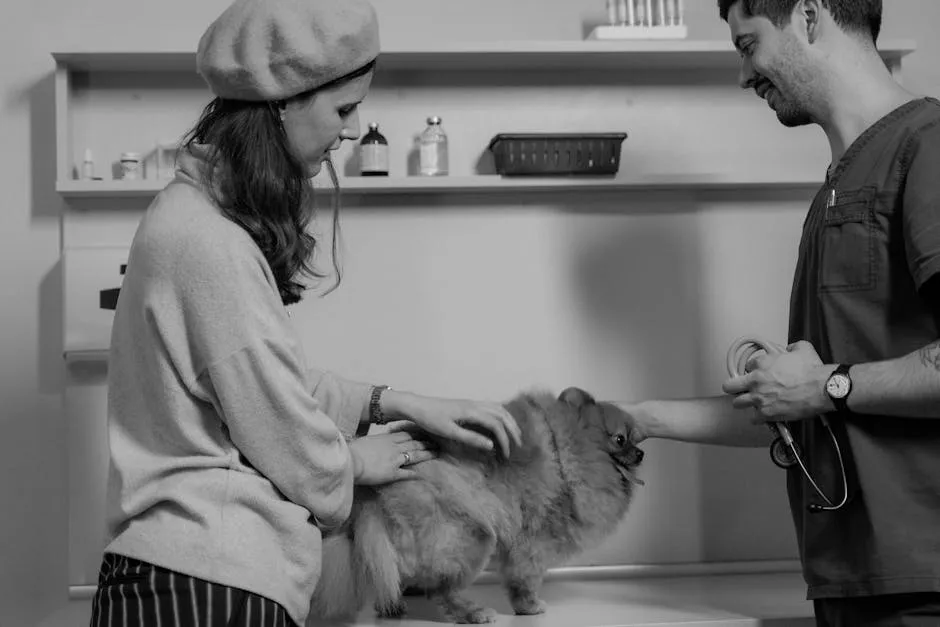
Regular Check-ups
Regular veterinary visits are crucial, especially for older dogs or those with known health issues. Aging can bring a host of problems, from arthritis to heart disease. Keeping a close eye on your dog’s health is essential.
During check-ups, your veterinarian can assess your dog’s overall condition and catch any potential issues early. Regular health screenings can help identify changes in behavior or physical health, allowing for timely interventions. Don’t underestimate the importance of preventive care!
Monitor your dog’s behavior closely. Has there been a change in appetite? Is your pup more anxious than usual? Any sudden shift in behavior warrants a discussion with your vet. Keeping an open line of communication with your veterinarian ensures that your furry friend receives the best care possible.
By recognizing the signs that require immediate attention and understanding the importance of regular vet visits, you can help your dog lead a healthier, happier life. Always remember, you know your dog best, so trust your instincts and seek help when necessary!
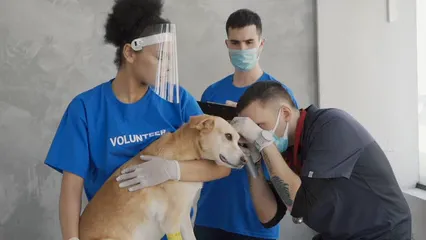
Tips for Managing Your Dog’s Nighttime Panting
Creating a Comfortable Environment
A cozy sleeping area can make a world of difference for your dog. Start by ensuring the room temperature is comfortable. Aim for a cool, well-ventilated space. Fans or air conditioning can help regulate heat during warmer months.
Bedding matters too! Invest in a comfortable bed that supports your dog’s joints. Memory foam beds are a great option for older dogs. They provide the right amount of comfort and support, helping to ease any aches and pains.
Consider the placement of your dog’s bed as well. A quiet corner away from noise can create a serene sleeping environment. Reducing disturbances allows your dog to relax, minimizing panting caused by anxiety or stress.
To keep your dog well-hydrated during the night, consider a Doggie Water Bottle with Bowl. This convenient product allows your pup to stay hydrated without making a mess, which is especially helpful during hot nights.
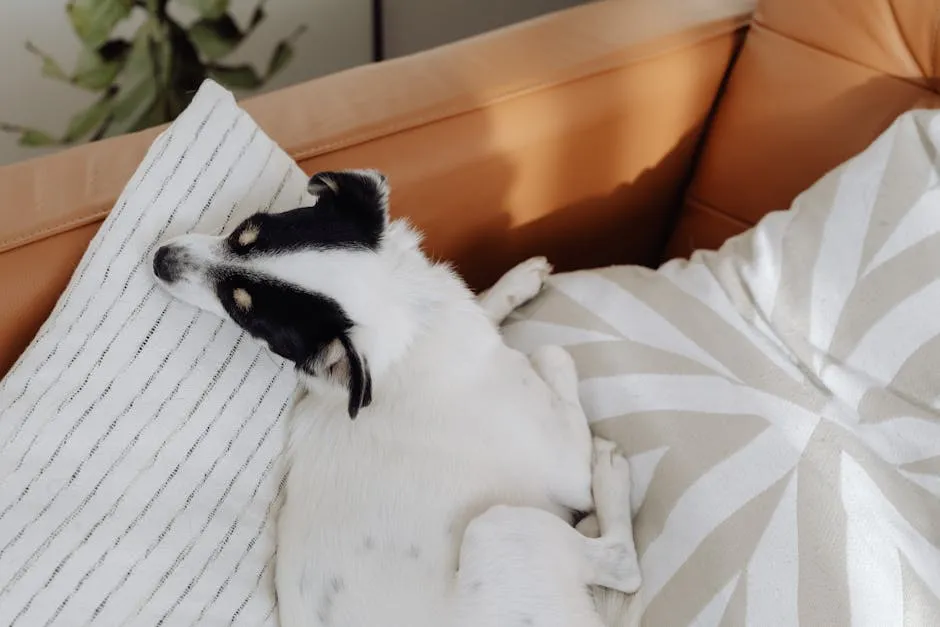
Behavioral Modifications
When it comes to reducing nighttime panting, behavioral modifications can be incredibly effective. Calming music can create a soothing atmosphere, helping your pup wind down. There are even playlists specifically designed for dogs!
Pheromone diffusers are another option. These products mimic the natural calming scents produced by mother dogs, helping to soothe anxious pups. They can be especially useful during stressful events like thunderstorms or fireworks.
Training is essential too! Work on desensitizing your dog to things that trigger their anxiety. Gradual exposure to these triggers can help them feel more secure and confident. Training sessions can also be a great bonding experience for you both.
For interactive fun, consider a Outward Hound Hide-A-Squirrel Puzzle Toy. These engaging toys can help keep your dog mentally stimulated, reducing anxiety and promoting relaxation.
With a little effort, you can create a peaceful sleeping environment and help your furry friend feel more secure. Remember, a calm dog leads to a happy household!
When to Seek Professional Help
If your dog’s nighttime panting continues despite your best efforts, don’t hesitate to reach out for professional help. Consulting a veterinarian or a certified dog behaviorist can provide additional insights and solutions tailored to your dog’s needs. Your pup deserves the best care possible, and sometimes that means seeking expert advice.
Conclusion
Nighttime panting in dogs is a behavior that warrants attention, as it may indicate underlying health concerns or emotional distress. As a caring pet parent, understanding the reasons behind your dog’s panting is essential for ensuring their well-being and comfort. By recognizing the signs and knowing when to consult a veterinarian, you can help your furry friend enjoy peaceful nights and a healthier life.
Taking note of your dog’s nighttime habits can provide valuable insights. If you notice excessive panting without a clear cause, consider the potential triggers. Stressful events, such as thunderstorms or changes in routine, can lead to anxiety-driven panting. Additionally, health-related issues might also be at play, so don’t overlook the possibility.
Establishing a calming nighttime routine can make a significant difference. Provide a comfortable sleeping environment, and consider using calming aids or techniques to help your dog feel secure. However, if your efforts don’t seem to alleviate the panting, it’s time to consult a professional.
For those times when your dog just needs to chill, consider a Dog Cooling Mat. This product can help keep your pup comfortable on hot nights, allowing them to relax and enjoy their sleep.
Early intervention can lead to quicker resolutions and better outcomes. Whether it’s a behavioral issue or a medical condition, addressing the cause of nighttime panting is vital for your dog’s health. You can ensure your furry companion enjoys restful nights and vibrant days by staying vigilant and proactive.
FAQs
Is it normal for dogs to pant at night?
Panting in dogs can be normal after exercise or in warm conditions. However, excessive panting at night, especially when there’s no clear reason, may indicate a problem. It’s essential to differentiate between normal and concerning panting to ensure your dog’s well-being.
What should I do if my dog is panting heavily?
If your dog is panting heavily, first check for environmental factors like heat or stress. Ensure they have access to water and a cool space. Observe for other symptoms such as lethargy or coughing. If the panting persists or worsens, contact your veterinarian for further evaluation.
Can anxiety cause my dog to pant at night?
Yes, anxiety can lead to nighttime panting. Common triggers include loud noises, separation anxiety, or changes in routine. If you suspect anxiety is the cause, consult a professional for strategies to help your dog feel more secure and relaxed.
When should I take my dog to the vet for panting?
Take your dog to the vet if you notice excessive panting that occurs frequently without a clear cause, especially if accompanied by lethargy, coughing, or changes in appetite. Prompt veterinary care is crucial for identifying and addressing potential health issues.
Are there specific breeds more prone to nighttime panting?
Yes, certain breeds, particularly brachycephalic breeds like pugs and bulldogs, are more prone to respiratory issues and anxiety, making them more susceptible to nighttime panting. Pet owners of these breeds should monitor their dogs closely for signs of distress and seek professional help if needed.
Please let us know what you think about our content by leaving a comment down below!
Thank you for reading till here 🙂
All images from Pexels

